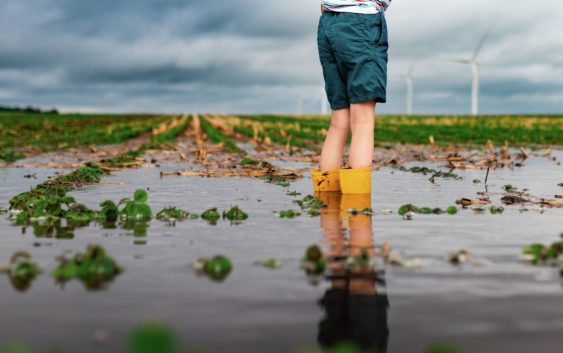- Hundreds of brush fires burn across North Carolina Saturday; several fires still burning Sunday
- Texas’ biggest wildfire started a year ago. How does the Panhandle look now?
- To her, Hurricane Helene debris isn’t trash. It is full of memories — and she’s returning them
- Bills introduced a year after state’s largest blaze seek to limit wildfires
- A year after Texas’ largest wildfire, Panhandle residents tugged between hope and anxiety
New study forecasts increased flooding in Texas due to climate change, population growth

A recently published study focuses on projected flood risks for regions and states across the U.S. as well as the impacts these events could have on communities in these areas.
Published last week in the journal “Nature Climate Change,” the study forecasts increased flood risks in Texas over the next 30 years as a result of climate change and increased development on existing floodplains due to the growing U.S. population, with impacts disproportionately impacting Black communities.
The study, led by a team of international flood risk scientists, revealed that current flood risk mapping, relying on past observations, fails to account for increasing climate change threats.
“Flood risk is managed globally and assumes that history is a good predictor of the future,” the U.S. Army Corps of Engineers Institute for Water Resources stated in a press release. “Be it enforcing regulations within flood zones defined using historical water-level records, modeling the cost-benefit ratio of mitigatory actions based on historical flood probabilities or not considering future risk when permitting new development, ubiquitous flood risk management tools fail to recognize that the nature of floods is changing.”
Using “advanced modeling techniques” to calculate the financial toll of flooding, the study forecasted average annual flood losses would increase by 26.4% from $32 billion currently to $40.6 billion in the U.S. by 2050, due to climate change alone.
“The estimates of financial loss, which include damage to homes, businesses and their contents, were based on 2021 dollar values so the actual numbers would likely be much bigger factoring in inflation,” the study’s authors stated in a press release.
The study also highlighted the disproportionate impacts projected increased floods could have on U.S. communities in these areas.
“The future increase in [flood] risk will disproportionately impact Black communities while remaining concentrated on the Atlantic and Gulf Coasts,” the U.S. Army Corps of Engineers Institute for Water Resources stated in the press release about the study.
Additionally, the release states that projected population changes “could cause flood risk increases that outweigh the impact of climate change fourfold.” In the study, the researchers state that an average of 3.63 million people are annually exposed to flooding with climate change projected to increase this to 4.31 million.
“Meanwhile, population growth alone in a static climate (that is, no future changes in flood hazard) would result in a 72.6% increase to an average annual exposure of 6.27 million by 2050,” according to the study.
“Average annual exposure increases due to climate change are generally found across the East Coast, with existing Texas and Florida residents seeing a roughly 50% increase in flood exposure by 2050,” researchers continued. “States with little climate risk may still see a large increase in flood risk unless future development patterns are managed appropriately.”
“These results make clear the need for adaptation to flooding and emergent climate risks in the United States, with mitigation required to prevent the acceleration of these risks,” researchers stated in the study.
Action aside from measures focused on decarbonization will be needed to mitigate these risks, according to the study’s co-author Paul Bates, a professor of hydrology at The University of Bristol’s Cabot Institute for the Environment and School of Geographical Sciences.
“Current flood risk in western society is already unacceptably high, yet climate and population change threaten to inflate these losses significantly,” Bates said in a press release issued by the university. “The relatively short timescales over which this increase will take place mean we cannot rely on decarbonization to reduce the risk so we have to adapt better, both to the situation now and for the future.”
To read the entire study in “Nature Climate Change,” visit here.